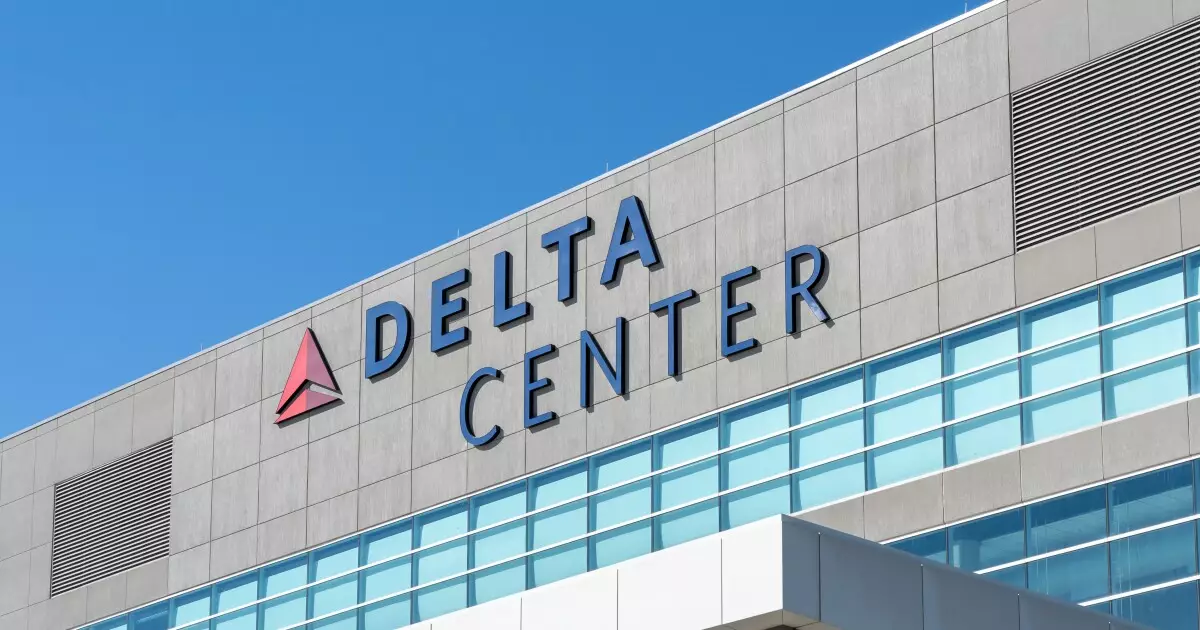In a bold move, Salt Lake City is preparing to offer $900 million in sales tax revenue bonds aimed at transforming its downtown landscape, particularly with renovations to the Delta Center—home to the NBA’s Utah Jazz and, as of recently, the NHL’s Utah Mammoth. The appeal of urban revitalization is undeniable, especially in a city that aims to become a bustling hub of both sports and culture. However, while the promised benefits seem glamorous, the underlying risks deserve closer scrutiny.
On one hand, every bond sale comes with a vision for growth and prosperity, beckoning the prospect of increased foot traffic and economic stimulation. Yet, it’s crucial to question whether this vision can materialize or if it’s merely a mirage driven by an insatiable desire to keep up with trendier urban centers. Taxpayers must recognize they are not just financing a sports arena but are in fact betting on the long-term success and sustainability of Salt Lake City’s urban development strategy.
The Sales Tax Increase: Sweeten the Pot or Sour the Deal?
To fund this grandiose spending spree, Salt Lake City is imposing a 0.5% sales tax increase, a move endorsed by the City Council back in October. While proponents argue that this marginal hike will not impose an unfair burden on residents—exempting necessities such as groceries and cars—it’s crucial to examine the long-term implications of this incremental taxation. Will citizens, already feeling the sting of inflation, accept this additional expense for the sake of a shiny new arena? Public sentiment might swing negatively, especially if the anticipated returns don’t materialize, potentially leading to a backlash against local politicians.
Furthermore, the projected $1.2 billion generated over 30 years seems appealing on paper—but will it actually flow as planned? Proponents of this plan should realize that they are walking a fine line, and any economic downturn or unforeseen competition could unravel their financial forecasts.
Market Uncertainty: A Risky Proposition
Municipal bonds are often touted as safe investments, primarily backed by the public’s faith in their local government and the promise of tax revenues. However, relying heavily on tenuous projections can turn this perceived safety into a ticking time bomb. Pat Luby of CreditSights warns of potential declines in revenue should either sports franchise depart Salt Lake, which significantly raises the stakes. What happens if the allure of an NHL franchise fails to draw in fans, resulting in dwindling attendance?
City planners often operate under the optimistic assumption that sports teams will thrive indefinitely. But history has proven that franchises are not immune to economic struggles, and their departures could leave the municipality with a hefty debt load and little to show for it.
Great Promise, Greater Pitfalls
Underneath the glimmer of new development lies a labyrinth of challenges and what-ifs. A recent analysis by Moody’s has rated the first lien bonds as A1, citing “solid debt service coverage.” However, a mere rating does not equate to guaranteed success. Moody’s also pointed out the likelihood of failure if annual debt service coverage drops below a critical threshold.
City officials appear confident, but the question remains: Are they setting themselves up for a perilous predicament? Local taxpayers should be alarmed—risky bets like these can result in long-term financial burdens should the utopian vision fail to materialize.
Economic Growth vs. Community Priorities
There’s no arguing that a modern sports arena could position Salt Lake City as a destination for both sports and tourism. However, one must ponder if revitalizing the downtown area should come at the expense of other essential community priorities. Education? Public safety? Infrastructure? All these areas risk becoming secondary as city leaders shift their focus toward dazzling projects that promise “quick” returns.
The concern over whether this paradigm may coat a city’s soul with glamour while neglecting the well-being of its residents is a serious consideration. Urban planners and policymakers should strive for a balanced approach rather than swinging the pendulum toward opulent development that may not serve all constituents effectively.
Legacy or Burden?
The upcoming years will be pivotal not just for the Delta Center but for the financial landscape of Salt Lake City. While the ambitious vision can inspire hope, it is also tinged with apprehension. Are residents truly on board with spending such substantial amounts mainly for entertainment? Or will there come a day when the legacy of this bond issue turns into an economic burden that weighs down future generations?
When factoring in the volatile nature of professional sports, it’s imperative to remain vigilant and skeptical of the cheerleaders promoting this venture. In the end, it may very well take a united front from the community to ensure that this gamble pays off—not just for a few shareholders, but for everyone involved.


Leave a Reply